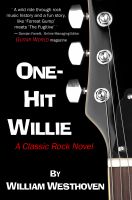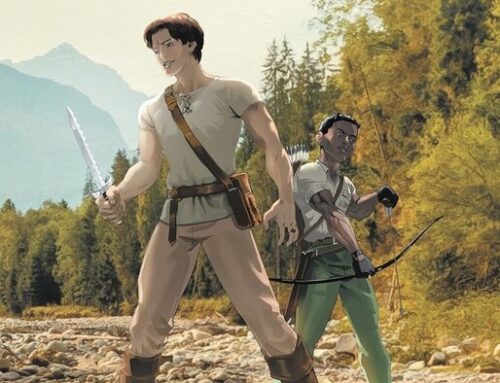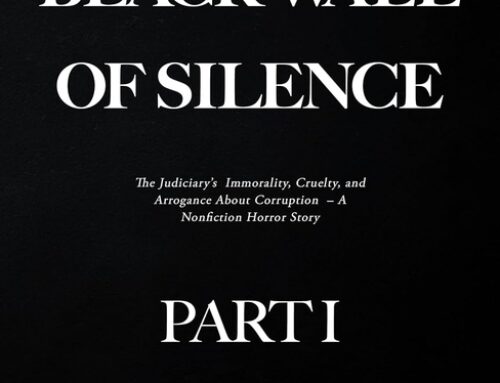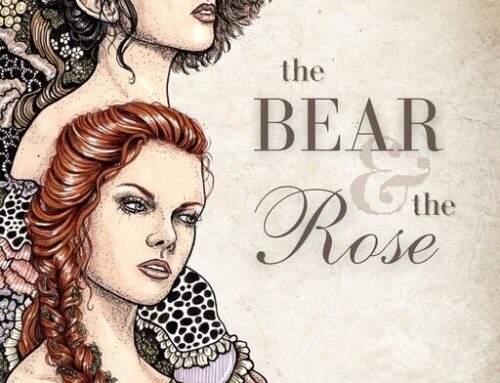 As an art critic says to an artist in the 1850 Charles Reade novel Christie Johnstone, “Art is not imitation, but illusion.” In fiction, it’s challenging to tell a story using archetypal themes and characters without descending into cliché. When you tell a story involving rock and roll, this feat becomes even trickier.
As an art critic says to an artist in the 1850 Charles Reade novel Christie Johnstone, “Art is not imitation, but illusion.” In fiction, it’s challenging to tell a story using archetypal themes and characters without descending into cliché. When you tell a story involving rock and roll, this feat becomes even trickier.
William Westhoven, who has covered the performing arts as a journalist since 1989, makes the leap to fiction successfully with his debut novel. He accomplishes this by using a compassionate, humorous narrative voice, interspersing his journalistic observations about the music business with a light enough touch to let the story continue moving.
One-Hit Willie: A Classic Rock Novel opens as a musician consents to an interview on television prior to a reunion tour with his former band. In fine in media res style, a “gotcha” entertainment journalist is speaking:
“Did you hear the question?”
Of course he heard the question. It was still ringing in his ears like a damn church bell.
Aaron hung on as the room spun around him. Get a grip, man, you’re losing it!
“I’m sorry, who?” he asked, stalling for precious milliseconds.
“Weekend Willie. Does that name mean anything to you?”
“Uh, no. I mean, not really. Should it?” He mustered a thin smile, trying desperately to cover his panic.
In this brief passage Westhoven hooks us with a mystery: Who is this Willie, what is Aaron hiding, and why should we care about him? To begin answering the latter question, we soon learn Aaron’s previous successes haven’t gone to his head:
He was different than the sad parade of weeping used-to-bes who could not bear it when they walked down the street and no one recognized them. Carrie Mann was not exploiting him. He was exploiting her. And he had other people in his corner, important people, who would make sure his tour was a respectable event, not some kind of nostalgia freak show.
Amid the chaos created by this on-the-air interview, the Prologue stops as abruptly as it started. From Pearl Harbor through the New Millenium, from Las Vegas to San Francisco by way of Atlantic City and Oceanside, California, the story of this musician’s epic career is then told in chronological order—fifty years and coast-to-coast.
By the time he is a teenager, Willie is already performing on stage nightly. He doesn’t quite know what to do with the attention from his mother and girlfriend, let alone his audiences. But we are told early on what motivates him to keep playing:
It wasn’t the attention he enjoyed. It was how he could make people feel things with his music.
As the plot winds its way through time and place, our protagonist is beset with triumphs and tragedies befitting any guitar hero. In spite of his popularity in Las Vegas, he is forced by circumstances to leave town and change his identity. He lands in San Francisco during the Summer of Love and eventually starts another band, selling millions of records. But as he grows older, he’s more and more the reluctant hero:
In between shows, the band continued to watch the news reports and sulk about missing the concert of the century.
Aaron startled himself by daydreaming about playing in front of half a million people, just like Hendrix was at Woodstock. Could his new band really ever get that big? And if they did, could they handle it? Could he handle it? Aaron lived in constant conflict between his need for anonymity and his need for an audience.
Westhoven gives us characters that are types and yet individuals. Aaron’s mother is Winnie Quinn, and while we’ve all met someone like Winnie, we’ve never met this Winnie. There’s a tavern owner named Pappy, a studio engineer called Flash, and a casino named The Full House. The aptly-named characters and places are introduced with lyrical description, such as Las Vegas mobster Pasquale “Patsy” Bucco:
Patsy was built like a coal furnace. Five-foot-seven, nearly as wide, with a cast-iron stomach inside and out. Shoulders wider than the alley that cut from Division to Elm in his native Chicago. Round biceps the size of coconuts. Knuckles hard as lug nuts.
The characters also come to life through believable dialogue, whether the conversations are long or short. Even more impressive is Westhoven’s use of place to reflect a character’s level of comfort (or discomfort) with their environment, be it New Jersey—
Atlantic City girls were much prettier than Chicago girls, too. Strolling the Boardwalk in shorts and sundresses that billowed in the ocean breeze. Lounging on the beach in next to nothing. Maybe there was something in the air, a tonic that let Patsy forget his enormous responsibilities.
Or Las Vegas—
… Nothing mattered more to him than leading his band and mesmerizing his loyal fans like some sort of desert Pied Piper. …
Or San Francisco (my favorite paragraph in the book)—
The recording sessions for the first album by the Victorian Manner were the stuff of legend. Arguments that escalated into fistfights. Clashes of ego that threatened to compromise the San Andreas Fault. Attacks of anxiety, panic and hysteria. Walkouts and tearful reunions that ate up days of studio time.
Westhoven also knows when to wear his wistful storyteller hat and when to wear his observant journalist hat, as contrasted in these two passages:
“You could hurt yourself dancing to jazz,” Willie often said. He and Bobby would try to dance to a Miles Davis record, get all twisted and then fall on top of each other, laughing like hyenas.
Current events played a feature role in bringing the band back together. A nuclear accident at Three-Mile Island in Pennsylvania had ignited a firestorm of protest across the country in early 1979. …
… Even some of the more conservative Americans, who had been reluctant to protest against the government, were willing to protest a private industry spewing toxic waste into their backyards.
The movement gained more momentum when famous musicians, actors and other celebrities attached themselves to the cause. Benefit concerts were being planned in many large cities around the country. …
The Author’s Note in the back of the book goes into the process Westhoven went through in creating his narrative voice and the personal meaning of the themes arising throughout his carefully woven story.
It bears repeating to say the author takes us to the edge of the stage without falling into a mosh pit of cliché. That I think so much of this novel is the reason I rate the book 4 stars instead of 5. I’d like to see the cover without the blurbs added (front and back); I couldn’t find credits for the front photo or the cover design (both are superb). Additionally, the text needs a quick copy edit to clean up numerous yet easy-to-fix typos.
But don’t let that stop you from getting this book. For a self-published first novel, this is something to be proud of. I’ve known famous musicians and am fairly well-versed in the history of rock and roll, yet found myself chuckling at times, gasping at others, and misting up at the end. Well done, Willie!
Links
Get an Editorial Review | Get Amazon Sales & Reviews | Get Edited | Publish Your Book | Enter the SPR Book Awards | Other Marketing Services






















Leave A Comment